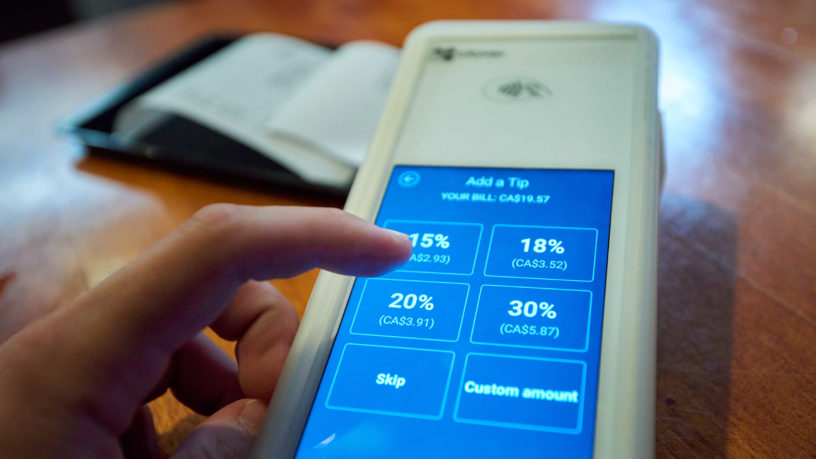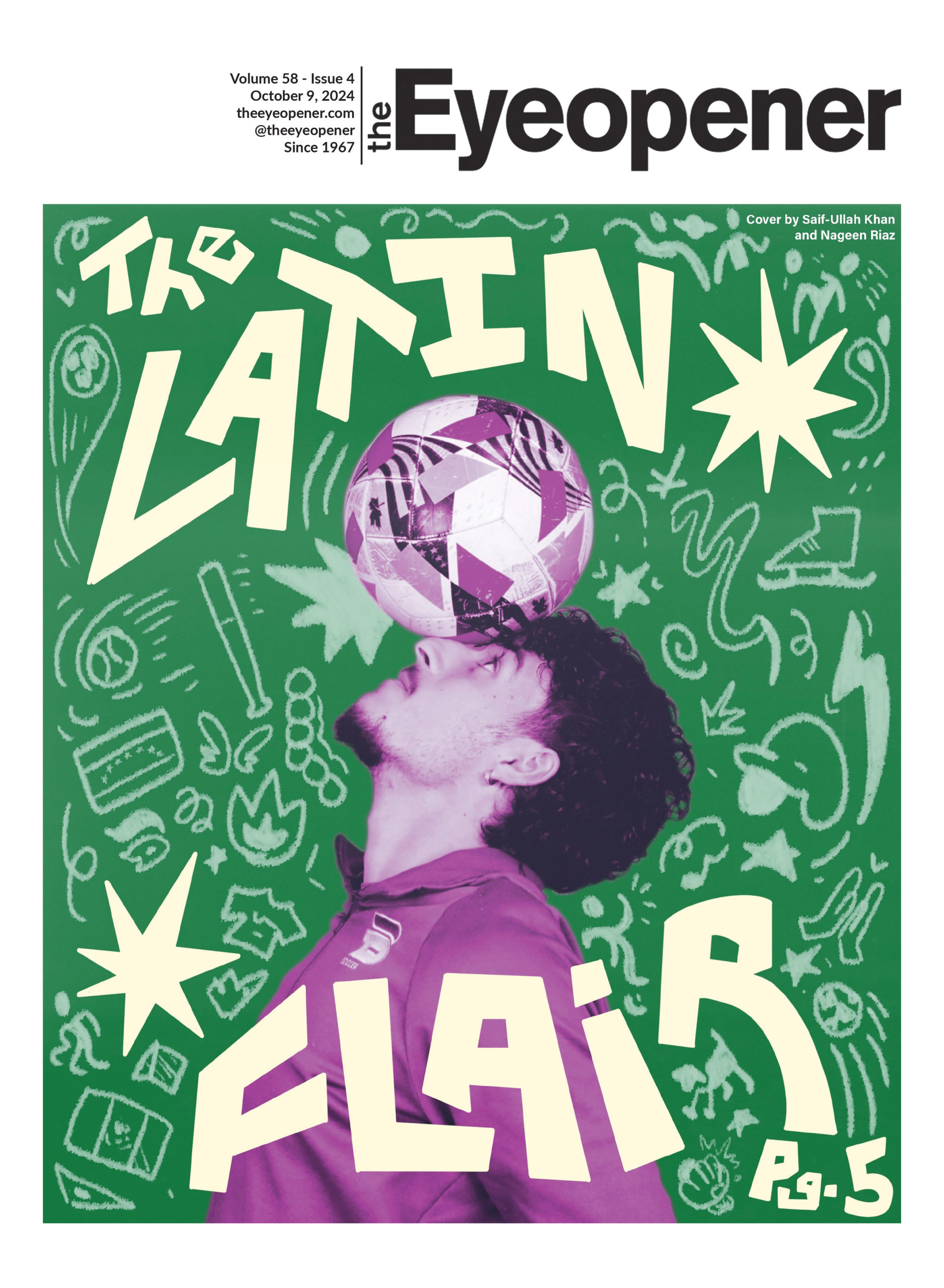By Tia Harish
Tipping is considered supplementary income for workers in the restaurant industry. As the cost of living continues to climb in Toronto, these workers depend on both their wages as steady income and tips that are regulated by the quality of service they provide.
This fast-paced and intensive industry employs nearly 50,000 Ontarians as food and beverage servers, according to the Government of Canada’s Job Bank.
The average Torontonian feels they are being asked to tip a greater amount and more frequently as the cost of living in the city rises, according to a study from the Angus Reid Institute. The study shows 62 per cent of Canadians feel they are tipping more when eating out.
While some locals may notice an increase in the cost of a dinner at a restaurant or drinks at a bar, how much is appropriate to tip at food service establishments while prices inflate? Here’s what some industry professionals feel is the right amount.
Coffee Shops
Many baristas master the craft of making drinks to accommodate a customer’s personal drink preference. Rachel MacKinnon is a barista at a Bay Street cafe, Coffee Island. She believes tipping at a coffee shop should be based more on the experience you receive, not how complicated a drink order is.
“You could take in the customer service and how you are treated when you’re getting your order taken,” said MacKinnon. “If the barista is kind of standoffish and not too chatty, then that might affect the tip. If you’re feeling like you’re having a good time and you’re getting a good drink, then it’s worth it.”
Haleh Asadnia, another barista at Coffee Island, added that food service industry workers count on the tips that they receive because the cost of living is expensive in Toronto.
“In Canada, [tips] are part of the lifestyle and people do count on the tips that they receive. So because the cost of living is so expensive…it would be nice for customers to think of that,” said Asadnia.
Both MacKinnon and Asadnia said they tip around 15 per cent when they get a beverage from a coffee shop.
Bars
Bartenders and bar staff can elevate a club or bar experience. Whether it’s a new drink recommendation or a pleasant conversation, the staff add to the experience of going out.
“Tips of 10 to 20 per cent is pretty industry standard,” said Brendan Corney, a bartender at Pegasus on Church Street in the Church-Wellesley neighbourhood of Toronto.
According to Corney, this would be roughly the same as tipping a dollar or two per drink at the bar he works at.
“I tend to do my drinking in the village, so oftentimes I know the person that is serving me,” Corney explained. “Servers tend [to tip] upwards of 30 per cent.” He acknowledged that 30 per cent is much more than regular customers would tip, but found that it was part of the industry’s culture.
He stated that tipping at bars should be entirely voluntary, since bartenders now must receive minimum wage. On Jan. 1, 2022, the Ontario government changed the lowered minimum wage of $12.55 for liquor servers to match regular minimum wage.
Corney believes that anything bartenders get over their normal wage is “‘gravy’ but shouldn’t be expected.”
Corney noted the tip pooling setup at his bar is different than that of a restaurant since there is less staff to distribute tips to other workers involved in the restaurant experience—commonly referred to as a “tip pool”
A tip pool is defined as when “servers collect tips directly from patrons and then contribute a portion of these tips to an employee-run pool. The employer re-distributes the pool to the kitchen staff and other employees who do not receive tips directly from patrons,” according to Restaurants Canada.
Sit Down Restaurants
Grace Amos, a supervisor and server at Caribbean restaurant The Diner’s Corner on Yonge Street said customers should judge the service, the food quality and the environment when deciding how much to tip.
Amos said 15 to 18 per cent would be standard if you enjoyed the meal and the service exceeded your expectations. Tipping 20 per cent or more should be reserved if the overall quality went above and beyond expectations to deliver a quality service.
Kailey Huang is a student working part-time at HanBingo, a Korean dessert cafe on Spadina Avenue. She said that although tips are encouraged based on great customer service, she recognised that some customers aren’t able to afford big tips—such as students.
“Generally speaking, the lowest [tip] being 10 per cent is pretty reasonable. Especially since in downtown Toronto there are so many students,” said Huang. “Students having to pay a lot of tip on top of already paying for some things that are not cheap…Sometimes the tipping options are like, either no tip or minimum 18 [per cent].”
No-Tip Restaurants
The concept of a hospitality-included tip model for restaurants is still considered unconventional in Toronto, with the business model few and far between at dining establishments in the city.
Hayden Johnston, co-owner of Richmond Station in downtown Toronto, converted his restaurant to a gratuity-included format to set a standard of good service and give opportunity to grow within the company.
“The quality of our offerings, both food wise and service wise, has improved,” said Johnston. “I think a lot of that just has to do with the culture around hospitality-included [restaurant models].”
Johnston said with hiring professionals who could maintain a good quality of service, he was able to give them employment insurance and make sure their wages were fair. This also increased incentives to become managers, since at many restaurants where customers are expected to tip, servers becoming managers might take on more responsibility with more hours and then also get paid less.
“[Servers becoming managers] are not earning the same amount of gratuity,” said Johnston.
The prices on Richmond Station’s menu are inclusive of a service charge, yet the restaurant’s prices are still competitive, according to Johnston.
He said switching to a hospitality-included model is a difficult transition but was worth it as diners are getting tired of tipping. “People are getting tip fatigue,” said Johnston. “I think what we offer and the way we offer our service is better than ever.”










Leave a Reply